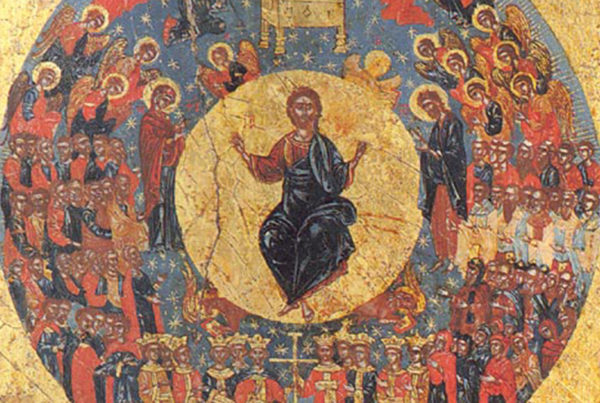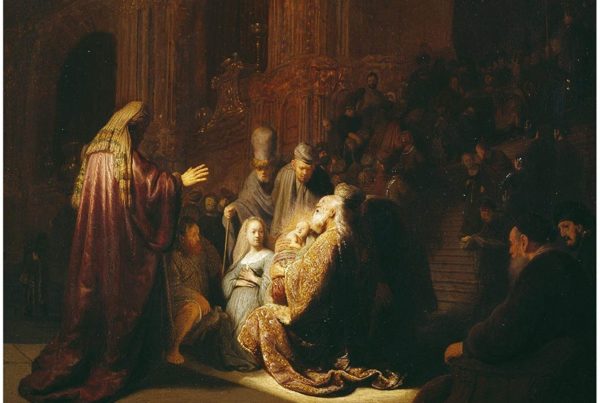[Note: this is the third in a series of posts working through Greg Boyd’s recently released Crucifixion of the Warrior God: Interpreting the Old Testament’s Violent Portraits of God in Light of the Cross.)
When we last left Greg Boyd’s CWG, he was arguing that IF the cross is the definitive revelation of who God is, then we should expect that the written testimony of that revelation will itself have a discernible “cruciform” character. Specifically (to recap), he contended that:
- God “breathes” his revelation both by “acting toward us” and, perhaps astonishingly, “allowing others to act towards him” (p1250, emphasis mine). “God’s ‘breathing’ is a dialectical rather than a unilateral process” (ibid). For Boyd, that means that the testimony itself will reflect both divine and human (and therefore culturally conditioned and fallen) elements. Which means that…
- We must “read Scripture expecting that there will be times when, to one degree or another, the revelatory content of a portrait of God is to be found not on its surface, which everyone can understand by straightforward exegesis, but in its depth, where we by faith discern the humble, loving condescension of our heavenly missionary (God)” (p1251, emphasis mine). Once again, this is what we see in the cross. A “surface reading” of the cross sees only an apparently guilty, godforsaken criminal. But with the eyes of faith we are able to discern beyond the surface to the depth, where we see the fathomless love of a God who would stoop to become his own “antithesis”, a “curse” on our behalf, to save us.
These two foundational convictions set the stage for Dr. Boyd’s effort to flesh out the four big principles of his “Cruciform Hermeneutic”, which over the course of the next four posts I will outline in turn.
Here’s the first one. He calls it The Principle of Cruciform Accommodation and summarizes it as follows:
In the process of God “breathing” the written witness to his covenantal faithfulness [to Israel], God sometimes displayed his triune, cruciform, agape-love by stooping to accommodate his self-revelation to the fallen and culturally conditioned state of his covenant people (p644).
When we look at the written testimony of the Old Testament, we notice that there are times when God, as we have come to know him in the crucified Christ, seems to be portrayed in ways that are “out of character.” When this happens, fidelity to this God requires that we assume “something else is going on” in the text. Boyd explains that “while the Cruciform Hermeneutic tells us that we must assume that ‘something else is going on’ when we encounter [such] material…the Principle of Cruciform Accommodation discloses the most fundamental aspect of what this ‘something else’ is.” He argues that what we are witnessing is in fact “the remarkable depths to which God has always been willing to stoop to remain in covenant relationship with, and to continue to further his historic purposes through, his people, just as he does in a supreme way in the cross” (ibid).
That is to say, the very ugliness of the portraits, when seen through the eyes of faith, are themselves a demonstration of God’s cross-shaped, agape love. He lets himself from time to time be misunderstood and mischaracterized, even by his covenant people, in order to further his historical purposes of winning the world over with his non-coercive love, which was supremely demonstrated in the cross of Jesus Christ. The ugly portraits themselves, then, become “literary crucifixes” which anticipate and bear witness to the final revelation of God on Golgotha, where the God who knew no sin “became sin for us” so that in him we might become the righteousness of God (2 Cor 5:21).
Refashioning a concept developed by Martin Luther, Boyd argues that the ugly portraits are “masks of a humble God”, who would rather be mischaracterized by his people than abandon fellowship with them. His love is willing to stoop so far as being portrayed as his own antithesis–a violent despot–in order to remain in covenant with his people. He writes that “a cross-shaped understanding of divine accommodation entails that the more a scriptural accommodation conceals God’s true nature on its surface, the more profoundly it reveals God’s true nature in its depths” (pp650-651).
The evidence that God in fact does this is seen in the extent to which biblical authors depict God bending some of his ideals to accommodate his fallen, wayward people, much like a missionary trying to win over a pagan tribe rife with backwards and inhumane practices. Boyd explains that a missionary must “earn the right to be heard by patiently demonstrating God’s love as they sow seeds of the gospel that they hope will bear fruit in the years to come.” So also, “Because God honors the personhood of the free agents he has created, he must work to bring about change by means of influence rather than coercion. And this requires God to accommodate a great many false beliefs and inhumane practices as he patiently works to move people toward his goal for them” (p702, emphasis mine).
He is thus Israel’s “Heavenly Missionary”, who cannot lead his people into complete understanding all at once, but must work via the arts of persuasion. As the history of Israel demonstrates, this is a long task for God. And thus he allows things like:
- Concessions to his ideals for marriage among his people
- Letting himself be portrayed as a king-approving deity in response to his people’s wayward desires, which in turn…
- Portrays him as “essentially [accommodating Israel’s] entire religious-political framework” (p717), as we might expect a pagan deity to do, which has the result of…
- Further depicting him, at times, as yet another a tribal religious deity who favors one nation over another and is thus glorified by the “sacred violence” used by his people to defend their turf.
Boyd spends a good deal of chapter 14 demonstrating that last point in great detail, showing how many of the biblical authors simply used “stock imagery” from their Ancient Near Eastern (ANE) counterparts to depict Yahweh, the result of which is mostly unflattering–Yahweh winds up looking, as often as not, like just another ANE deity. But this again shows God’s love. He allows this “mask” in order to accommodate his fallen and culturally-conditioned people as he leads them on the way to salvation.
The net result of this misunderstanding for God’s people is that the Old Testament frequently celebrates “sacred violence”, just like any ANE people would do. And yet, there is a thread woven throughout the text of Scripture that directly bears witness to God’s redemptive purposes for the world. “God’s true nonviolent character and will are beautifully reflected in Micah, for example, as the Lord expresses his dream that someday people ‘will beat their swords into plowshares and their spears into pruning hooks. Nation will not take up sword against nation, nor will they train for war anymore (Mic 4:3; cf. Isa 2:4)’.” Boyd explains that “in this passage we see the Spirit breaking through to reveal the true peace-loving character of the heavenly missionary” (p737). God’s desire is to “make war on war” until finally it is eradicated and peace is restored to his good world.
Next post: The Principle of Redemptive Withdrawal


